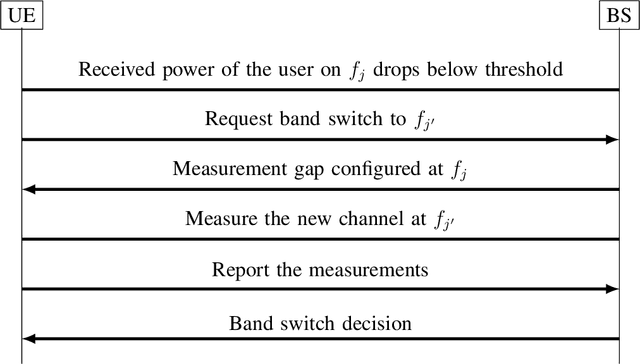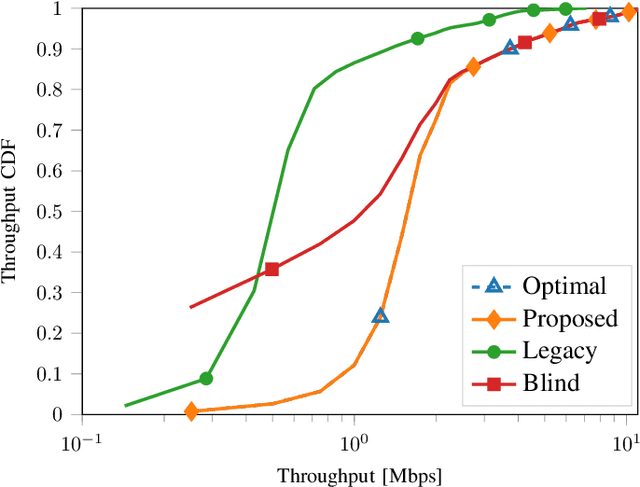Ahmad AlAmmouri
Charlie
Joint Phase Time Array: Opportunities, Challenges and System Design Considerations
Dec 02, 2024



Abstract:This paper presents a novel approach to designing millimeter-wave (mmWave) cellular communication systems, based on joint phase time array (JPTA) radio frequency (RF) frontend architecture. JPTA architecture comprises time-delay components appended to conventional phase shifters, which offer extra degrees of freedom to be exploited for designing frequency-selective analog beams. Hence, a mmWave device equipped with JPTA can receive and transmit signals in multiple directions in a single time slot per RF chain, one direction per frequency subband, which alleviates the traditional constraint of one analog beam per transceiver chain per time slot. The utilization of subband-specific analog beams offers a new opportunity in designing mmWave systems, allowing for enhanced cell capacity and reduced pilot overhead. To understand the practical feasibility of JPTA, a few challenges and system design considerations are discussed in relation to the performance and complexity of the JPTA systems. For example, frequency-selective beam gain losses are present for the subband analog beams, e.g., up to 1 dB losses for 2 subband cases, even with the state-of-the-art JPTA delay and phase optimization methods. Despite these side effects, system-level analysis reveals that the JPTA system is capable of improving cell capacity: the 5%-tile throughput by up to 65%.
3D Beamforming Through Joint Phase-Time Arrays
Jan 01, 2024Abstract:High-frequency wide-bandwidth cellular communications over mmW and sub-THz offer the opportunity for high data rates, however, it also presents high pathloss, resulting in limited coverage. To mitigate the coverage limitations, high-gain beamforming is essential. Implementation of beamforming involves a large number of antennas, which introduces analog beam constraint, i.e., only one frequency-flat beam is generated per transceiver chain (TRx). Recently introduced joint phase-time array (JPTA) architecture, which utilizes both true time delay (TTD) units and phase shifters (PSs), alleviates analog beam constraint by creating multiple frequency-dependent beams per TRx, for scheduling multiple users at different directions in a frequency-division manner. One class of previous studies offered solutions with "rainbow" beams, which tend to allocate a small bandwidth per beam direction. Another class focused on uniform linear array (ULA) antenna architecture, whose frequency-dependent beams were designed along a single axis of either azimuth or elevation direction. In this paper, we present a novel 3D beamforming codebook design aimed at maximizing beamforming gain to steer radiation toward desired azimuth and elevation directions, as well as across sub-bands partitioned according to scheduled users' bandwidth requirements. We provide both analytical solutions and iterative algorithms to design the PSs and TTD units for a desired subband beam pattern. Through simulations of the beamforming gain, we observe that our proposed solutions outperform the state-of-the-art solutions reported elsewhere.
Joint Phase-Time Arrays: A Paradigm for Frequency-Dependent Analog Beamforming in 6G
Dec 18, 2023Abstract:Hybrid beamforming is an attractive solution to build cost-effective and energy-efficient transceivers for millimeter-wave and terahertz systems. However, conventional hybrid beamforming techniques rely on analog components that generate a frequency flat response such as phase-shifters and switches, which limits the flexibility of the achievable beam patterns. As a novel alternative, this paper proposes a new class of hybrid beamforming called Joint phase-time arrays (JPTA), that additionally use true-time delay elements in the analog beamforming to create frequency-dependent analog beams. Using as an example two important frequency-dependent beam behaviors, the numerous benefits of such flexibility are exemplified. Subsequently, the JPTA beamformer design problem to generate any desired beam behavior is formulated and near-optimal algorithms to the problem are proposed. Simulations show that the proposed algorithms can outperform heuristics solutions for JPTA beamformer update. Furthermore, it is shown that JPTA can achieve the two exemplified beam behaviors with one radio-frequency chain, while conventional hybrid beamforming requires the radio-frequency chains to scale with the number of antennas to achieve similar performance. Finally, a wide range of problems to further tap into the potential of JPTA are also listed as future directions.
* The paper is a revised version of the IEEE Access paper, that includes the full operation of Algorithms 1-3 to help curtail incorrect implementations
Deep Learning Predictive Band Switching in Wireless Networks
Oct 02, 2019



Abstract:In cellular systems, the user equipment (UE) can request a change in the frequency band when its rate drops below a threshold on the current band. The UE is then instructed by the base station (BS) to measure the quality of candidate bands, which requires a measurement gap in the data transmission, thus lowering the data rate. We propose a band switching approach based on machine learning that does not require any measurement gap. Our proposed classifier-based band switching policy instead exploits spatial and spectral correlation between radio frequency signals in different bands based on knowledge of the UE location. We focus on switching between a lower (e.g. 3.5 GHz) band and a millimeter wave band (e.g. 28 GHz), and design and evaluate two classification models that are trained on a ray-tracing dataset. A key insight is that measurement gaps are overkill, in that only the relative order of the bands is necessary for band selection, rather than a full channel estimate. Our proposed machine learning-based policies achieve roughly 30% improvement in mean effective rates over those of the industry standard policy, while achieving misclassification errors well below 0.5%.
 Add to Chrome
Add to Chrome Add to Firefox
Add to Firefox Add to Edge
Add to Edge